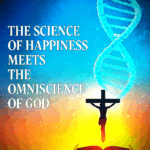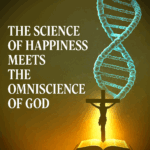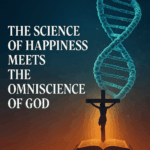
Text: John 12.20-43
Theme: We wish to see the King
Edited transcript
___________________________
Intr – My good friends in Christ, I have something to show you and I want you to participate, if you’d like to. Look to the screen and tell me: what are the colors you can see there in that picture? You can say it out loud if you want. Blue, magenta, red…. Did I hear yellow? No, you’re not seeing it right. There’s no yellow there. (Brenda offers her glasses for pastor on improptu; he takes them but it doesn’t change what he is seeing).
Are you sure you’re seeing yellow? Well, I guarantee you 100% there’s no yellow there. I know you’re seeing yellow, I’m seeing yellow, but I guarantee you no yellow there whatsoever. How come?
I did some research on why do our brains do that to us, and one of the responses could be this: when we are in doubt about what we see, our brains “fill in the gaps” for us. In the context of that research, even drawing the borders, but here, “colouring the surface area”. [1] That “yellow” area is just white and blue, it’s not yellow. But your brain and my brain, according to some research, tends to fill in the gaps. When we see something that doesn’t really make sense to us, then we try to create some idea or we come up with some idea about it. Or even when you don’t actively do so, your brain does that for you and goes on to “fill in the gaps”, and you see what’s not actually there.
So in a way, I could say you’re not seeing what you see, but you’re seeing what you wish to see, even if you don’t control that.
In the Gospel today, we saw that some Greeks wanted to see Jesus. They wanted to see Jesus. And sometimes we may have to ask ourselves, which is the Jesus we want to see? Is this the Jesus that is there to see or the Jesus that I wish to see? The text says, “Sir, we wish to see Jesus.” We want to see Jesus or we want to see what we wish?
As we look to some Bible texts or even this text for today and many others, when people are confronted with Jesus and when they see Jesus for what he is, they try to fill in the gaps. They just can’t stand what they hear. Jesus says one thing, they understand something else. For example, Jesus says “before Abraham was, I am”. “Well, Abraham is dead. So you’re saying you’re older than Abraham. How old are you?”[2] Or Jesus says, “the Son of man must be lifted up.” “Well, the Messiah is not going to be, it’s going to be living forever. How can you say that?”[3] And all along the way, Jesus keeps teaching the people and because they had their minds and hearts already filled with some gaps with theories from the past, they look to Jesus and they just can’t see Him for what he is.
But you think it’s just them? It could be you and me too. Still to this day, sometimes the Jesus we want to see Jesus is the Jesus we wish, not the Jesus we see. That’s a temptation as we deal in our daily life, as we go online in the internet world, as we talk to other people; because we see something in the Bible that doesn’t really match what we thought it should be saying, we might be tempted to go ahead and fill in the gaps with something else.
Let’s take one verse: “I have learned to be content in every situation,”[4] like Paul says in Philippians 4. That’s saying that you should be content when you have little, right? But actually context says also that you have to be content when you have plenty. It’s harder sometimes to be content when you have plenty than when you have little because how much is enough? And so forth. So you fill in the gaps of the teaching with your teaching. “God doesn’t give you more than you can handle.” Really? Is it what he says that in the Bible or is what you’re reading from your internet post and you think that fills the gap properly? How many times have you felt in your life that you had more than you could handle? Only God could handle that for you.
And Jesus goes on in the Gospel saying things to which people will simply try to fill in with the gaps with what they have in their minds. Just one example when Jesus says, “Father glorify your name”, and then the voice from heaven comes and says, “I have glorified it and will glorify it again.” What do people say about it? “Look, there was a voice from heaven just right now”? No, the text said, “has it thundered?” Was it a thunder or a loud voice or someone dynamiting something close by here and this ‘boom’ came up? They just couldn’t figure out how a voice from Heaven could come because they couldn’t believe Jesus was the Messiah. So they have to come up and fill in the gap with what they had in mind.
This is a danger for our faith if we are far away enough from the Word and we are being filled in the gaps with the wrong content; or if we don’t have the information to judge properly a situation and then we start to fill in with our own preconceived ideas or whatever ideas we have.
I can think of recent illustration here. Perhaps you saw in the news that our Princess of Wales, Kate Middleton, has been kind of off the spotlight since Christmas. So all sorts of theories crept up on the internet about what was going, on from jokes to conspiracy theories. Last Friday, she put and end to it with a video where she tells what’s going on. She had to go into surgery and they found a cancer in her abdomen. During the past few months she was going through surgery and treatment. She asked now for privacy. So people started to come up with all sorts of conclusions to fill in the gaps because, you know she is a princess, there must be something going on, something really shady, something stinky, whatever. Nobody was figuring out because they were not close enough (of course we can’t very much), but still many jumped to conclusions to fill in the gaps with what they wanted to see.
When it comes to the word of God, sometimes we have to ask ourselves, “is this the Jesus that I wish that I’m seeing or is this the actual word of God revealed to me to the action of the Holy Spirit”? What we want to do is to see Jesus, not the Jesus we wish, but the Jesus we see, because this is how He revealed himself in the Word.
He reveals himself as a humble King. He comes into Jerusalem on a donkey, not on a horse like a mighty king would do. He comes as a humble king who goes to face his unjust trial and condemnation and cross. Sometimes we want to see Jesus in all sorts of ways, but we have to start right there, right on His cross. He’s the humble king who though he was – not like a princess, a prince or a king – in the form of God, he humbled himself by becoming obedient and a servant up to death, and death on the cross. This is the Jesus that we see in the word, the one that comes for you. He knows what it is to suffer like a human being because he was 100% human and 100% God. And he went to his cross because he wanted to show to you who he really is. And he offers in his word and he offers himself in his sacrament of holy communion to be there with you and to show to you who you can see in him.
Like those Greeks, we want to see Jesus, but we want the Jesus that we see, not just the Jesus that we wish and sometimes fill in the gaps with our own preconceived ideas. We see Him right there in his Holy Word. He reveals himself to you as He is, so you can have your faith placed in Him. You can have the things you need to carry on with your life, filling your mind and your heart with what he teaches you.
We can take those words from those guys who wanted to see Jesus and make them ours today:
“sir, we wish to see Jesus” – As He really is, the Man on the cross voluntarily giving his life, killing death and coming back alive, giving us eternal life.
“sir, we wish to see Jesus” – to see him as the only way and the truth and the life.
“We wish to see Jesus” – To see him in the Word, the source of everything that we need to know about him. And every time we gather around his table as well, we see his body and blood – we see Jesus with our eyes of faith and receive him in us.
“We wish to see Jesus” – as we live our lives. We wish to see him abundantly reflected in our thoughts and words and deeds. And the best way to do so is to come close to Him and to learn from Him.
And finally, don’t forget this. We will see him. We see now in the Word, in the Sacraments, but one day we will see him face to face on the last day with desires that you have right now on the last day when you are resurrected to life eternal. You will see Jesus as he is, certainly as you wish to see him through your whole life.
Now, as I talk about seeing Jesus, sometimes you may think, “there are times in my life that I don’t really want to see him. I’m angry, I”m a little sad or very sad. I’m undergoing this or that. I’m being pushed away from the Word. I feel like my sorrows, my problems, my challenges are not fostering me in desire to see Jesus as I should or as I would.” Don’t forget this: He sees you.
He sees you all the time. He saw you before your birth. He sees when you are before him. He sees you when you are undergoing the worst of your days. When you are walking in darkness, it seems that you can’t see anything ahead of you. He sees you through. He walks with you. He is there with you, and he is leading you to see him on the last day.
As he sees you, you can see him, and you can see him from whom He is. Back to example of our princess: perhaps people had all sorts of ideas and not the one that is real because nobody wants to think of a weak princess, right? We think her as an strong, encouraging royal figure, and all of a sudden she is weak and in need of attention. This is sometimes why we don’t see Jesus. We want to see this big King who gives everything that I give and all the health and wealth that I need, and we forget to see that he was humble and weak and went to his cross for us because he wants to be there seeing you through at every step that you take on every new day of your life.
Cc – As a conclusion, I left you hanging in there in the initial illustration because I wanted to come back to it at the end of the sermon.(Points to the screen) This is a closer look into that picture. This is what is really there. If you zoom it in, you’ll see that there’s no yellow. It’s just black and white. If you are seeing from a distance, you see the yellow. If you’re seeing up close – with or without Brenda’s glasses -, this is what you will see. No yellow, just black and white
That reminds us that if you see Jesus from a distance, if you’re a distance from Him, perhaps you’ll see all sorts of things that are not there. When you are close to Him in his Word and living your life of faith with him, you see His true colors, which are always perfect and right. You see him for who he really is. We wish to see Jesus but as Jesus is and not as we just wish. And in the end, seeing Jesus for who he is is all that we can wish. Amen.
______________________________
[1] https://www.sciencedaily.com/releases/2007/08/070820135833.htm
[2] John 8
[3] John 12
[4] Philippians 4








